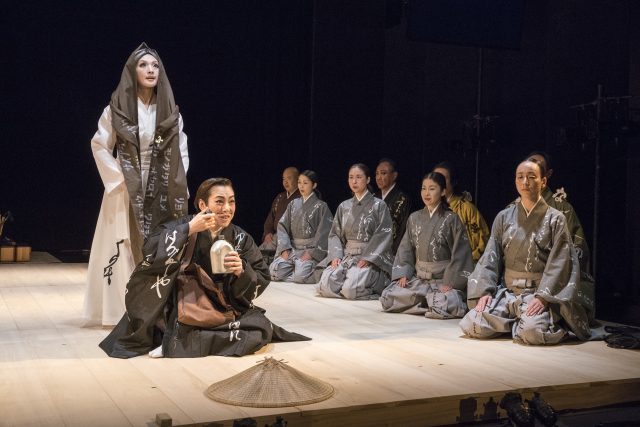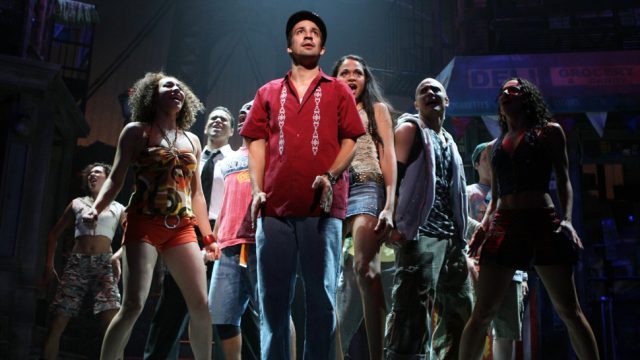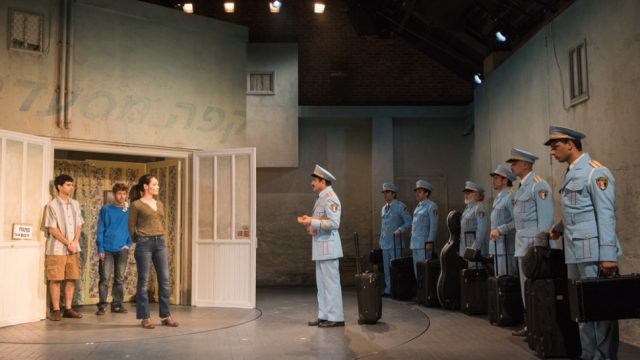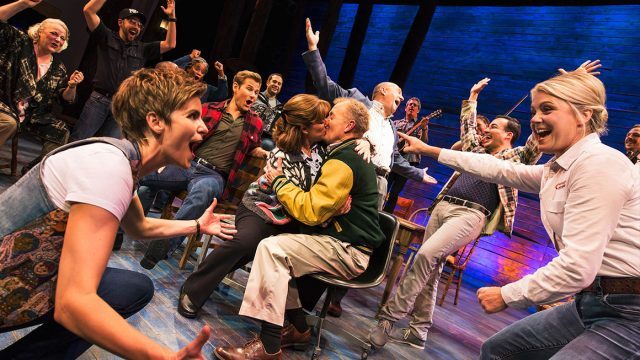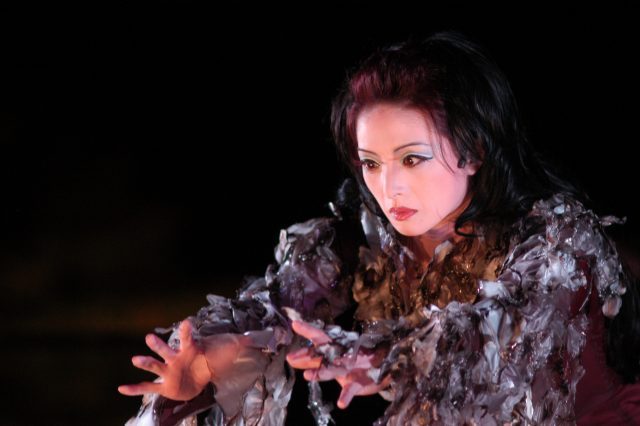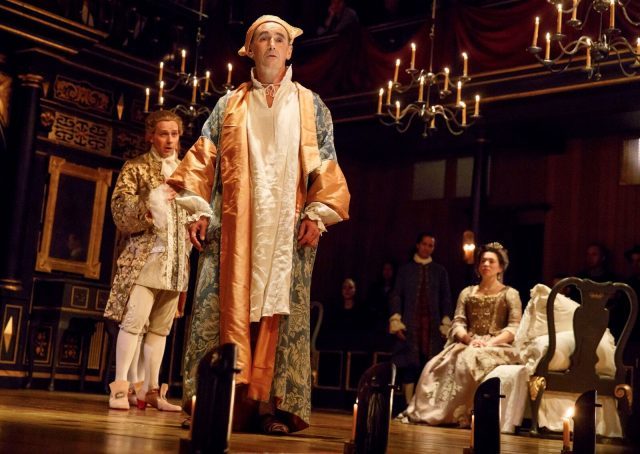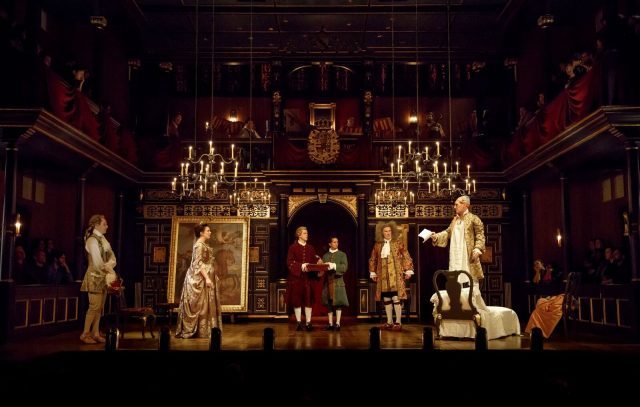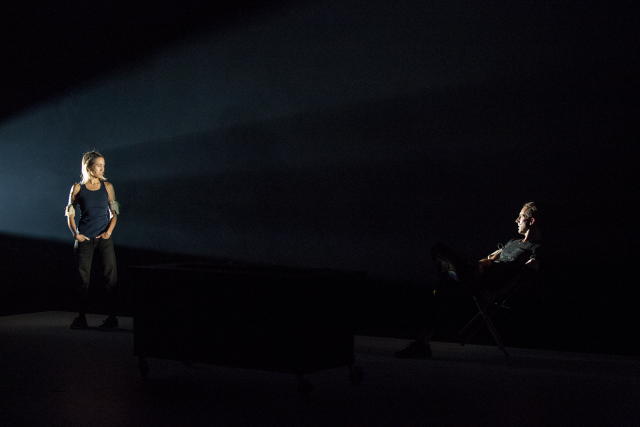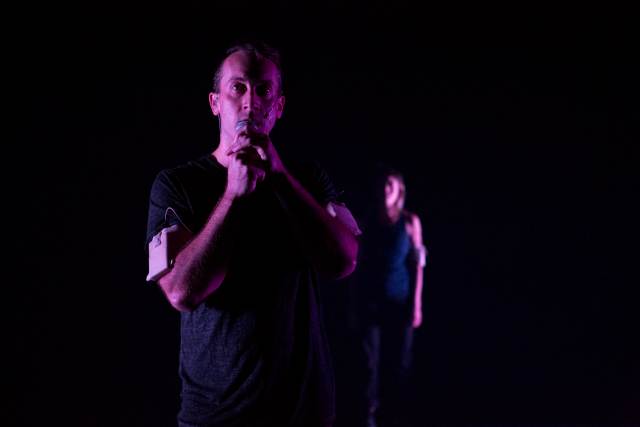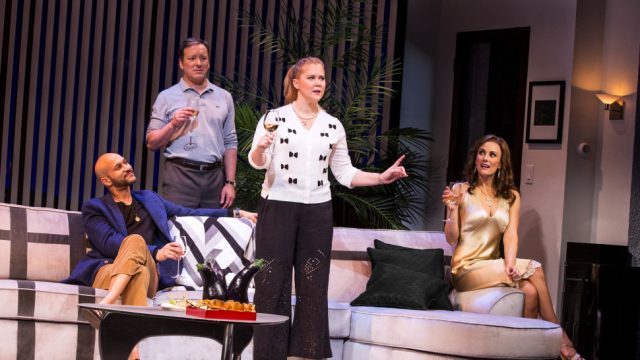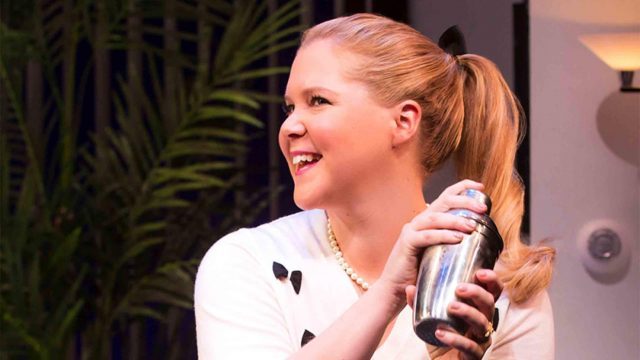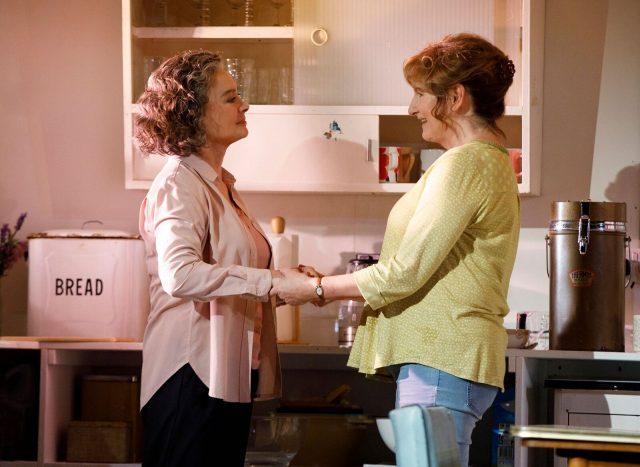
Old friends Rose (Francesca Annis) and Hazel (Deborah Findlay) reunite in Lucy Kirkwood’s The Children (photo © Joan Marcus 2017)
Manhattan Theatre Club at the Samuel J. Friedman Theatre
261 West 47th St. between Broadway & Eighth Aves.
Tuesday – Sunday through February 4, $60-$149
www.manhattantheatreclub.com
thechildrenbroadway.com
Amid all the splashy musicals, wacky comedies, and star-driven vehicles currently on Broadway, the British import The Children stands apart, a breath of fresh air in this winter season. Well, maybe that’s not the best way to classify this fiercely taut drama, which takes place shortly after a devastating nuclear accident on the East Coast of Britain. The fictional event appears to have even rattled the stage at Manhattan Theatre Club’s Samuel J. Friedman Theatre, which is severely tilted, creating a bit of an uphill or downhill climb when the characters move to the right or left. The play opens as Rose (Francesca Annis) pays a surprise afternoon visit to her old friend and colleague, Hazel (Deborah Findlay), who is living with her husband, Robin (Ron Cook), in a small cottage just outside the contaminated exclusion zone. “We heard you’d died!” Hazel announces; it’s been thirty-eight years since the two women, both nuclear engineers, last saw each other. While Hazel has settled into the domestic life of a retiree, with four children and four grandchildren, Rose has been gallivanting around the world, never settling down or getting married. When Rose asks Hazel why they haven’t moved farther away from the radiation, Hazel responds, “It’s just that little bit extra but it makes a world of difference to our peace of mind. . . . I would’ve felt like a traitor. Besides, retired people are like nuclear power stations. We like to live by the sea.” They are soon joined by Robin, who goes to their old farm every day, tending to the cows, even though it’s in the exclusion area. Where Hazel is very direct and to the point, Robin is more rambunctious and freewheeling, cracking jokes, asking Rose for a squeeze, and offering her some of his homemade wine. But when Rose reveals the reason she has returned — and secrets emerge — the trio has to reexamine their purpose in life and their future.
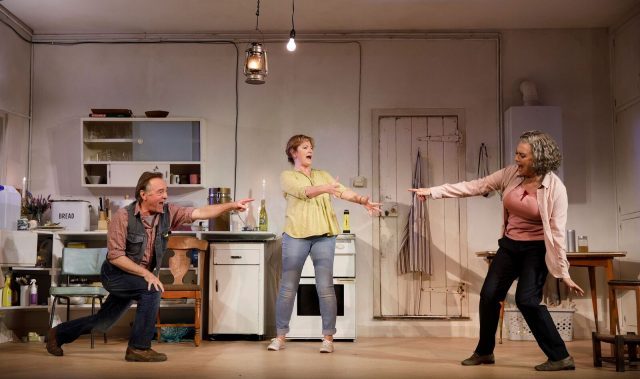
Robin (Ron Cook), Hazel (Deborah Findlay), and Rose (Francesca Annis) remember the good old days in U.S. premiere at Manhattan Theatre Club’s Broadway house (photo © Joan Marcus 2017)
Originally produced at the Royal Court Theatre, The Children is brilliantly written by Olivier Award winner Lucy Kirkwood (Chimerica, Mosquitoes), who has created three complex characters who are genuine and unpredictable. The play takes a hard look at ageing and death, examining the responsibility the old have to the young. “How can anybody consciously moving towards death, I mean by their own design, possibly be happy? People of our age have to resist — you have to resist, Rose,” Hazel says. “If you’re not going to grow: don’t live.” It is also about blood, both literally and figuratively. When Rose first enters the house, a shocked Hazel turns defensively and hits Rose, giving her a bloody nose. One of Hazel and Robin’s children suffers from mental illness, thinking she is a bloodsucking vampire. And, of course, radiation poisons the blood. James Macdonald, who has directed numerous works by Caryl Churchill (Escaped Alone, Top Girls) and Sarah Kane (4.48 Psychosis, Blasted), among others, keeps things balanced even as the actors have to deal with Miriam Buether’s angled set, which is framed as if a tilted picture on a wall come to life. Olivier nominee Annis (Cranford, Troilus and Cressida), Olivier winner Findlay (Stanley, Coriolanus), and Olivier nominee Cook (Juno and the Paycock, Faith Healer) reprise their roles from the London production, all three delivering warm, heartfelt performances, with a special nod to Cook for having to ride a tricycle uphill despite a bad back. And Max Pappenheim’s sound design stands out as well, from a Geiger counter to church bells. Despite its title, The Children is the most adult show in New York City right now, a marvelously resonant, intelligent, and engaging play that continually defies expectations as the plot twists and turns while something threatening hangs just past the horizon.
